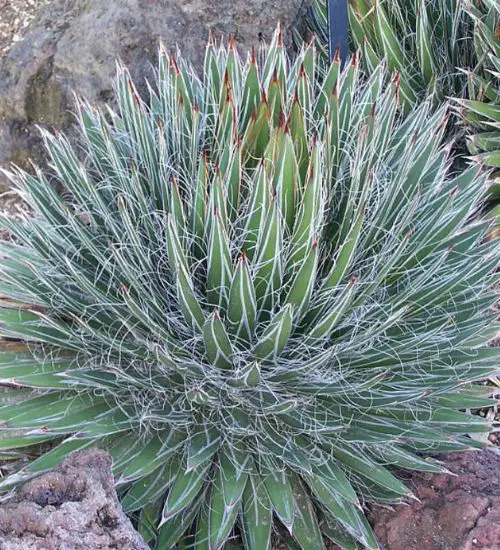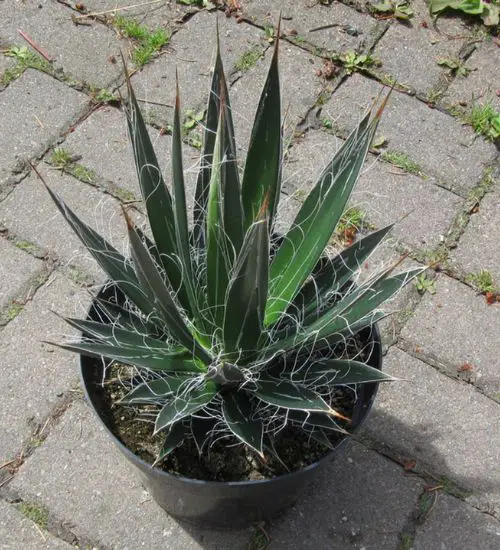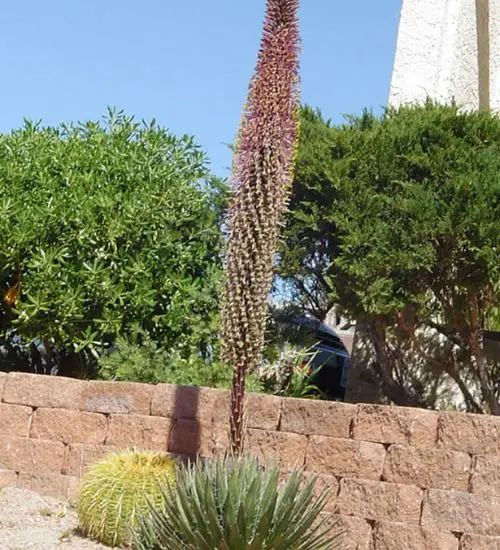Sun: full sun to partial shade
Water: Typical water needs for a succulent
Temperature: Zone 9a from 20° F to 25° F (-6.7 ° C to -3.9° C) to Zone 11b from 45° F to 50° F (7.2° C to 10° C)
Winter Survival: Cold hardy
Propagation: cuttings
Flower: in the summer
Flower Type: Green, white
Toxic: Can be toxic to humans and animals
Dormant: winter
Space Requirement: Indoors & Outdoors
Common Problems: pests
Where to buy Agave filifera?
Basc Care for Agave filifera
Watering
Watering for Agave filifera is a simple task. It requires Typical water needs for a succulent.
Regular watering period should be every 2 weeks
Fertilizing
Only feed this succulent during its active growing seasons which means no information. Use the right fertilizer applied in the right amounts. Applying half-strength balanced fertilizer every month or so is recommended for optimal results.
Do not fertilize during winter as the plant is dormant.
Sun & Location Requirements for "Thread Agave or Thread-leaf"
Agave filifera needs full sun to partial shade in order to thrive. While this variety needs plenty of bright light, it is important not to place it in direct sunlight for extended periods of time as this can cause damage or scorching to the leaves and stems. A shadier spot with indirect light could be just what "Thread Agave or Thread-leaf" needs.
As per this succulent profile, it is only able to stay healthy when the environment temperature is above the range of zone 9a from 20° F to 25° F (-6.7 ° C to -3.9° C).
"Thread Agave or Thread-leaf" is an ideal choice for gardens in cold climates. Its thick leaves and stems help it retain moisture, and its colorful foliage adds brightness to any winter landscape. This succulent is renowned for being cold hardy and able to survive temperatures down to 0°F. With its ability to withstand frigid weather, Agave filifera is the perfect addition to any frosty winter garden.
Any succulents in the group will need a medium space to grow. You can place your pot at your table or window. Since this plant needs more space than mini succulents, you should consider do not plant them together with other succulents/plants.
Agave filifera also benefits from some indirect light throughout the day as well, so make sure you give it enough space to soak up light without becoming too exposed to heat.
Propagation
One way to propagate Agave filifera is by cutting
Toxicity

Agave filifera has high levels of calcium oxalate, a substance that is toxic to both humans and animals. Ingesting parts of this succulent can cause skin irritation, difficulty breathing, blurred vision and vomiting in severe cases. Keep children and pets away from ""Thread Agave or Thread-leaf"" and regularly inspect for signs of damage or consumption.
Pests and Diseases
Agave filifera can be affected common pests and diseases like most of the other succulents such as scale insects and Snout weevil.
If you do spot any of pest signs, you can treat your succulent using below methods.
- Scale insects: quarantine, clean infected plants, soapy water.
- Snout weevil: apply the systemic insecticide two or three times a year.
Besides that, to prevent serious health issues from happening, keep your succulent in a well-ventilated area and check it regularly for any signs of pests or health problems.


